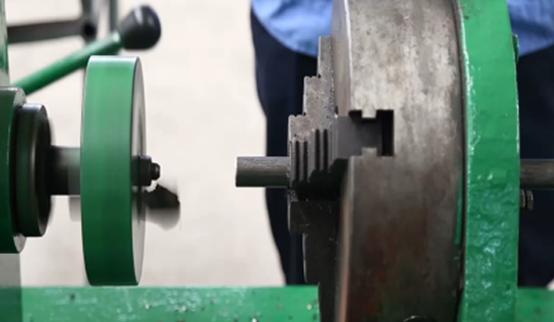 Afrikaans
Afrikaans  Albanian
Albanian  Amharic
Amharic  Arabic
Arabic  Armenian
Armenian  Azerbaijani
Azerbaijani  Basque
Basque  Belarusian
Belarusian  Bengali
Bengali  Bosnian
Bosnian  Bulgarian
Bulgarian  Catalan
Catalan  Cebuano
Cebuano  Corsican
Corsican  Croatian
Croatian  Czech
Czech  Danish
Danish  Dutch
Dutch  English
English  Esperanto
Esperanto  Estonian
Estonian  Finnish
Finnish  French
French  Frisian
Frisian  Galician
Galician  Georgian
Georgian  German
German  Greek
Greek  Gujarati
Gujarati  Haitian Creole
Haitian Creole  hausa
hausa  hawaiian
hawaiian  Hebrew
Hebrew  Hindi
Hindi  Miao
Miao  Hungarian
Hungarian  Icelandic
Icelandic  igbo
igbo  Indonesian
Indonesian  irish
irish  Italian
Italian  Japanese
Japanese  Javanese
Javanese  Kannada
Kannada  kazakh
kazakh  Khmer
Khmer  Rwandese
Rwandese  Korean
Korean  Kurdish
Kurdish  Kyrgyz
Kyrgyz  Lao
Lao  Latin
Latin  Latvian
Latvian  Lithuanian
Lithuanian  Luxembourgish
Luxembourgish  Macedonian
Macedonian  Malgashi
Malgashi  Malay
Malay  Malayalam
Malayalam  Maltese
Maltese  Maori
Maori  Marathi
Marathi  Mongolian
Mongolian  Myanmar
Myanmar  Nepali
Nepali  Norwegian
Norwegian  Norwegian
Norwegian  Occitan
Occitan  Pashto
Pashto  Persian
Persian  Polish
Polish  Portuguese
Portuguese  Punjabi
Punjabi  Romanian
Romanian  Russian
Russian  Samoan
Samoan  Scottish Gaelic
Scottish Gaelic  Serbian
Serbian  Sesotho
Sesotho  Shona
Shona  Sindhi
Sindhi  Sinhala
Sinhala  Slovak
Slovak  Slovenian
Slovenian  Somali
Somali  Spanish
Spanish  Sundanese
Sundanese  Swahili
Swahili  Swedish
Swedish  Tagalog
Tagalog  Tajik
Tajik  Tamil
Tamil  Tatar
Tatar  Telugu
Telugu  Thai
Thai  Turkish
Turkish  Turkmen
Turkmen  Ukrainian
Ukrainian  Urdu
Urdu  Uighur
Uighur  Uzbek
Uzbek  Vietnamese
Vietnamese  Welsh
Welsh  Bantu
Bantu  Yiddish
Yiddish  Yoruba
Yoruba  Zulu
Zulu conveyor impact bars
Understanding Conveyor Impact Bars Their Importance and Functionality
Conveyor systems are an essential part of modern industry, used extensively in manufacturing, logistics, and warehousing. At the heart of these systems are various components that ensure the smooth operation and longevity of the conveyors. One such vital component is the conveyor impact bar. This article will explore the significance, functionality, and benefits of conveyor impact bars in industrial settings.
What Are Conveyor Impact Bars?
Conveyor impact bars, also known as impact beds or impact rails, are designed to protect the conveyor systems from the effects of heavy loads and dynamic forces during material transfer. They are typically made from durable materials such as rubber, polyurethane, or metal, providing a cushioned surface that absorbs the impact of falling materials.
These bars are strategically placed at critical points along the conveyor, especially where heavy materials are loaded. This placement helps mitigate the risk of damage to the conveyor belt and other structural components, thereby enhancing the overall efficiency of the system.
Importance of Conveyor Impact Bars
1. Protection of Conveyor Components One of the primary roles of impact bars is to protect the conveyor belt from heavy impacts and abrasion. Without adequate protection, the belt can suffer from tears, rips, and premature wear, resulting in costly downtime and maintenance.
2. Reduction in Operational Costs By absorbing shocks and minimizing wear and tear on the conveyor system, impact bars can significantly reduce operational costs. They help extend the lifespan of not only the conveyor belt but also pulleys, rollers, and other associated parts, leading to fewer replacements and repairs.
3. Enhanced Safety Impact bars contribute to a safer working environment by containing the material being transported and reducing the risk of spillage. This containment minimizes hazards, protecting workers and ensuring compliance with safety regulations.
conveyor impact bars

4. Improved Material Handling Conveyor impact bars facilitate smoother material handling by providing a stable surface for falling materials. This stability reduces the likelihood of blockages and jamming within the conveyor system, promoting a more efficient flow of materials.
Types of Conveyor Impact Bars
Conveyor impact bars come in various designs and materials tailored to specific applications. Some common types include
- Rubber Impact Bars These are highly elastic and effective at absorbing shock. They are often used in applications with lighter materials. - Polyurethane Impact Bars Polyurethane bars offer a balance of durability and flexibility, making them suitable for a wider range of applications, including medium to heavy loads. - Steel Impact Bars For extremely heavy material handling, steel impact bars provide maximum protection and durability. While they are more rigid, they are ideal for environments where maximum strength is needed.
Installation and Maintenance
Proper installation of conveyor impact bars is essential to ensure they perform effectively. They should be aligned correctly with the conveyor frame and secured in place to prevent misalignment during operation. Regular maintenance includes checking for wear and tear and replacing bars that show signs of significant degradation.
Conclusion
In conclusion, conveyor impact bars are a critical component of conveyor systems, offering protection, safety, and efficiency. Their role in reducing operational costs and extending the lifespan of conveyor components cannot be overstated. As industries continue to evolve and the demand for efficient material handling increases, the importance of high-quality conveyor impact bars will only grow. Selecting the right type of impact bar for specific applications can lead to significant improvements in productivity and safety standards in industrial operations. Whether using rubber, polyurethane, or steel impact bars, understanding their functionality and maintaining them properly will ensure the smooth operation of conveyor systems.
-
Revolutionizing Conveyor Reliability with Advanced Rubber Lagging PulleysNewsJul.22,2025
-
Powering Precision and Durability with Expert Manufacturers of Conveyor ComponentsNewsJul.22,2025
-
Optimizing Conveyor Systems with Advanced Conveyor AccessoriesNewsJul.22,2025
-
Maximize Conveyor Efficiency with Quality Conveyor Idler PulleysNewsJul.22,2025
-
Future-Proof Your Conveyor System with High-Performance Polyurethane RollerNewsJul.22,2025
-
Driving Efficiency Forward with Quality Idlers and RollersNewsJul.22,2025





























